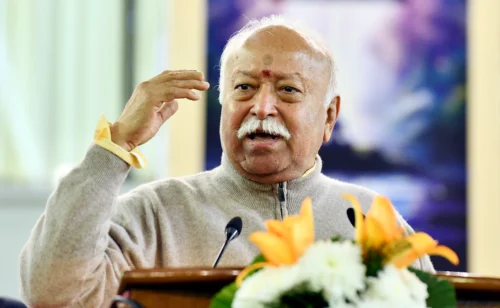Rama Krishna Sangem
RSS chief Mohan Bhagwat has reignited a fresh debate on Indians should go for 3 children per family norm, to keep the demographic balance in the country. He on Thursday said he was in favour of parents having three children, saying it helps to make the population of the country under control.
Addressing a press conference to mark 100 years of Rashtriya Swayamsevak Sangh (RSS), Bhagwat said, “India’s policy on population suggests 2.1 children, which means three children in a family. Every citizen should see that there should be three children in his/her family.
All citizens should consider having three children, so that population is sufficient and under control too,” he said. Bhagawat made these comments eight months ago in December 2024 too calling for the need to increase the population to India’s demographic identity and cultural balance intact. He expressed concern over declining population rate in the country.
Kutumb, integral part of society
Asserting that “kutumb” is an integral part of society with each serving as a building block, the RSS chief drew attention to the trend among young couples who are hesitant to have even one child.
A declining population is a serious concern. Loksankhya Shastra (demographic science) suggests that when a society’s total fertility rate falls below 2.1, it risks facing extinction. This decline does not necessarily require external threats; a society can gradually fade away on its own,” Bhagwat said. “Many languages and cultures have already disappeared due to this issue. Thus, it is essential to maintain a fertility rate above 2.1.
Our country’s population policy, formulated in 1998 or 2002, clearly says that the total fertility rate should not be below 2.1. Now when we say 2.1, it is not feasible to have children in fraction. So when we say 2.1, this means it should be more, at least three. The (population) science says so,” Bhagwat said.
According to the National Family Health Survey data released in 2021, India’s TFR — the average number of children a woman gives birth to in her lifetime — declined from 2.2 in 2015-16 to 2 during 2019-21. A TFR of 2.1 is considered as the replacement rate.
Of course, Bhagawat’s call for more children per family has drawn criticism from population experts and some economists too. They said that India is still not in a position to feed that much population, if every family gives birth to 3 children. Demographic dividend is applicable only when the country has enough GDP, per capital income and quality infrastructure to sustain such a big population. But, Bhagawat made the same argument again now.


